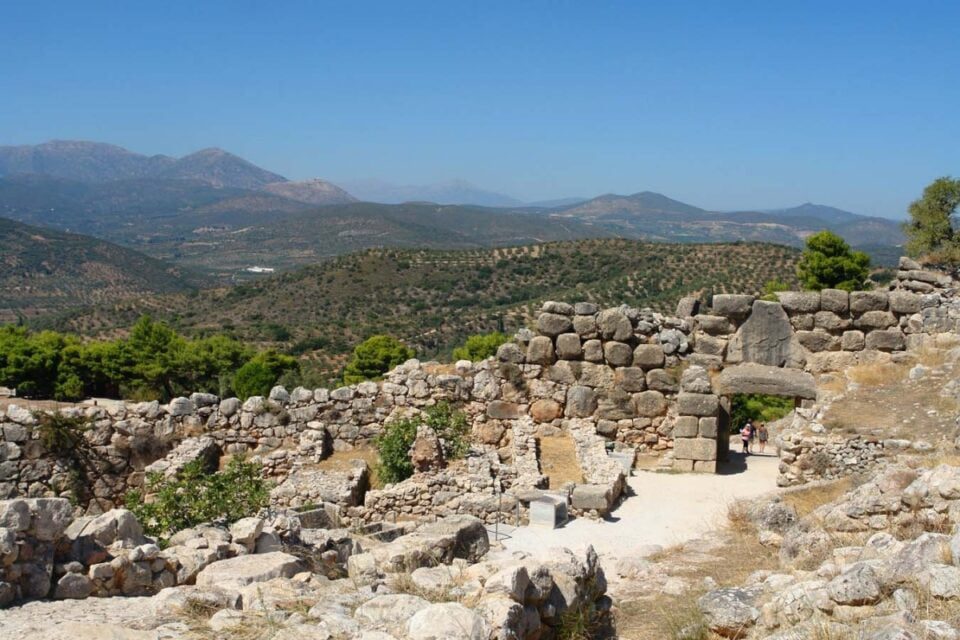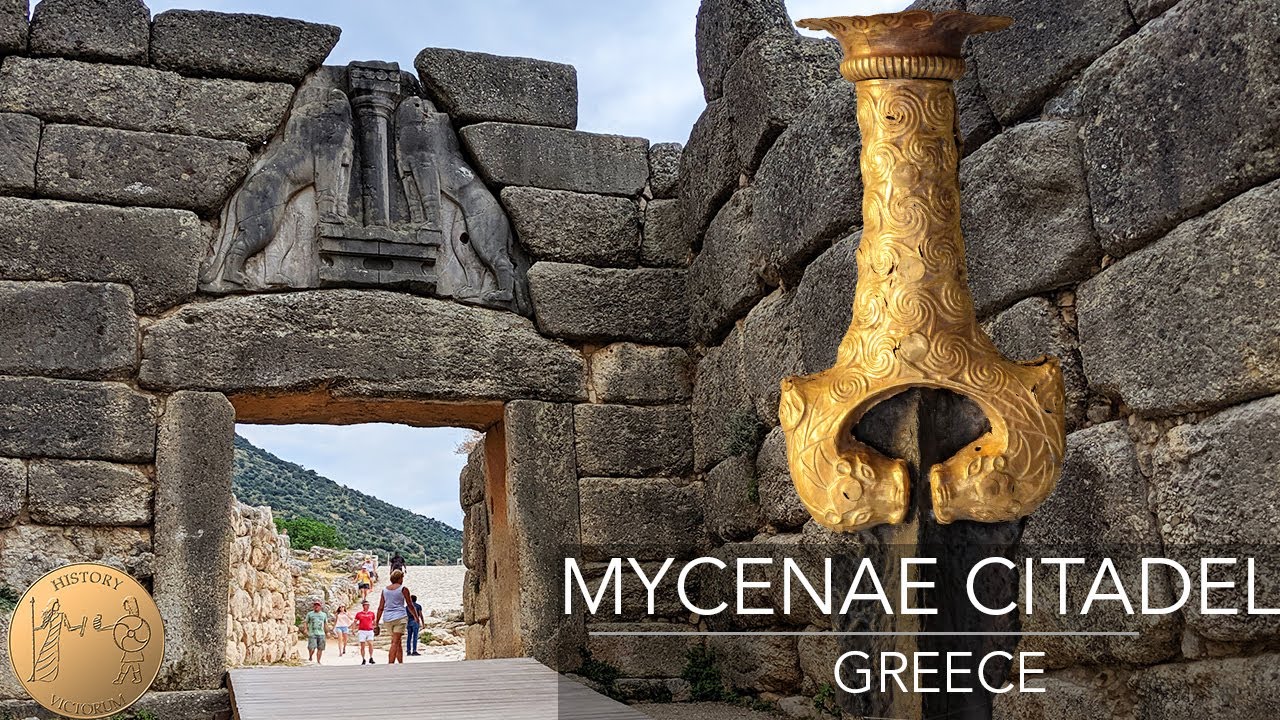Mycenae (Greece) is an ancient city located in the north – east of the country. Once a huge and influential settlement, it was considered the center of Mycenaean culture, as evidenced by the many precious items and unique artifacts found in golden tombs.
General information
Mycenae is an ancient city on the territory of modern Greece. Formerly part of Argolis, it was considered one of the centers of Mycenaean culture. Like all ancient cities, it was located on a hill, and was surrounded by stone walls (their height is from 6 to 9 meters in different areas).
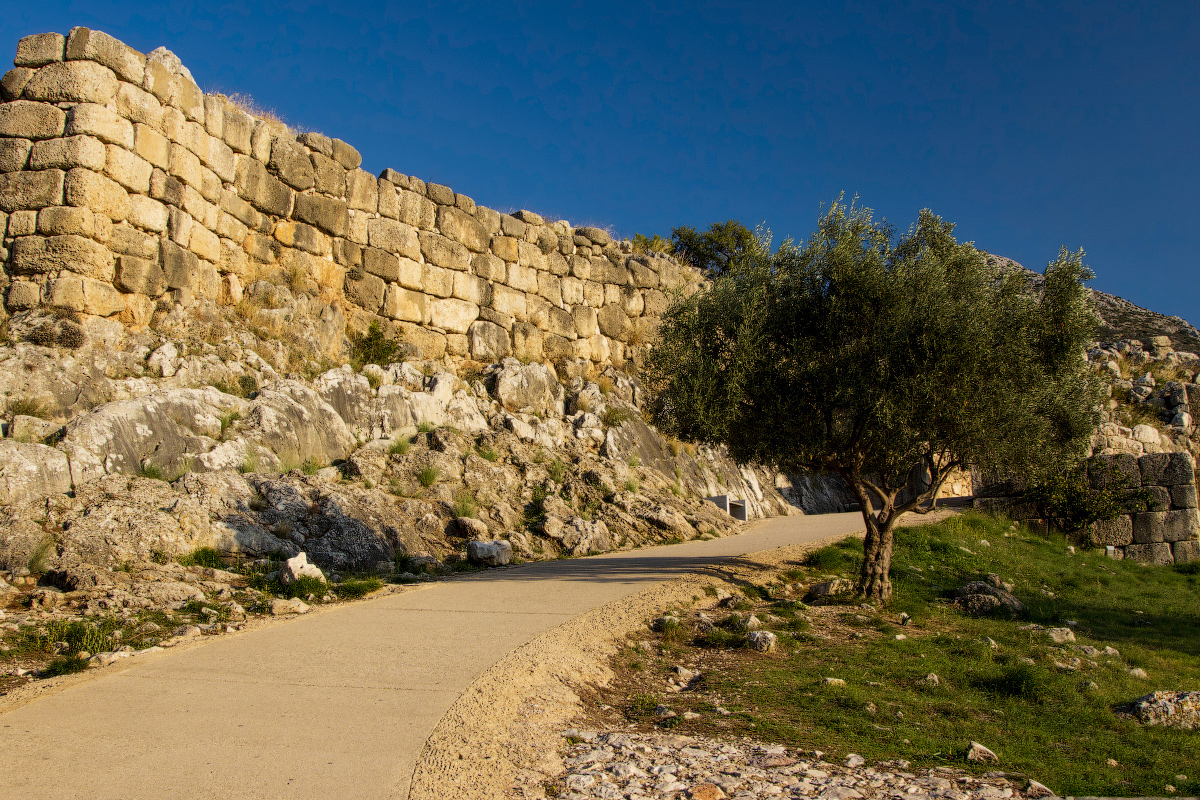
Today, only ruins remain on the site of the ancient settlement, and only tourists and scientists come to these places. Permanent population-354 people (live at the foot of the hill). The ancient city of Greece is located 90 km from Athens.
Historical background and myths
The exact age of Mycenae is unknown, but scientists believe that the ancient settlement is more than 4,000 years old. According to legend, the city was built by Perseus-the son of Zeus and Danae, who used the help of cyclops. The city flourished in the 1460s BC, when the Mycenaeans conquered Crete and began to establish colonies on the shores of the Aegean Sea. However, at the beginning of our era, the Pelonids came to these lands from neighboring Argos, who not only took the conquered territories, but also subjugated Mycenae.
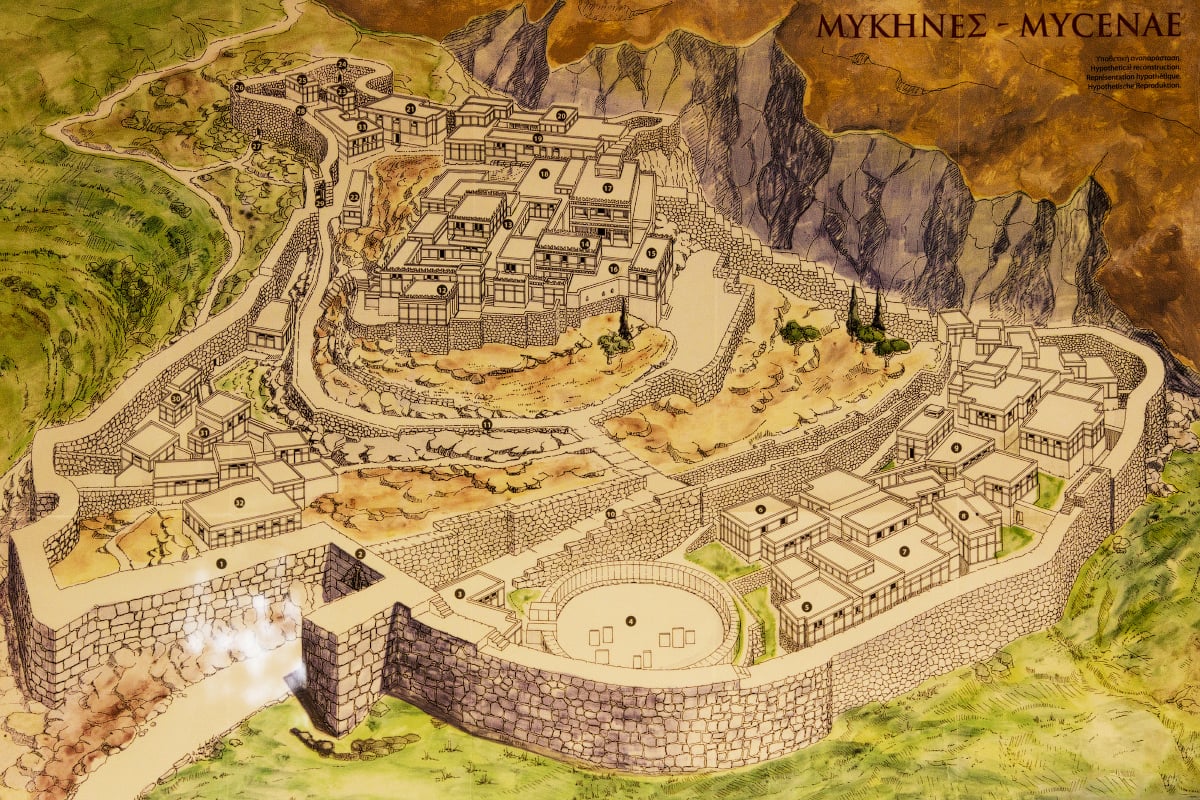
During the Greco-Persian wars, the city began to gradually decline, and in 468 BC it was finally abandoned by the people (due to the struggle with the Argos). After a few hundred years, people began to return to Mycenae, but they lived at the foot of the hill, and the locals were afraid to go to the fortress, which could only be reached by passing the cemetery.
Attractions
Lion’s Gate
The Lion’s Gate is the main attraction of Greek Mycenae, which met all travelers who came to the city. The gate was built at the beginning of the XIII century BC, and got its name due to the bas-relief, which is located in the upper part of the gate. The weight of the structure is 20 tons.

The uniqueness of the attraction lies in the fact that all the stones that were used to create the gate are carefully sanded and have round holes, similar to those left by a puncher. Scientists still cannot explain this phenomenon. The material from which the door shutters were made is also unknown – it is assumed that this is a type of non-existent wood.
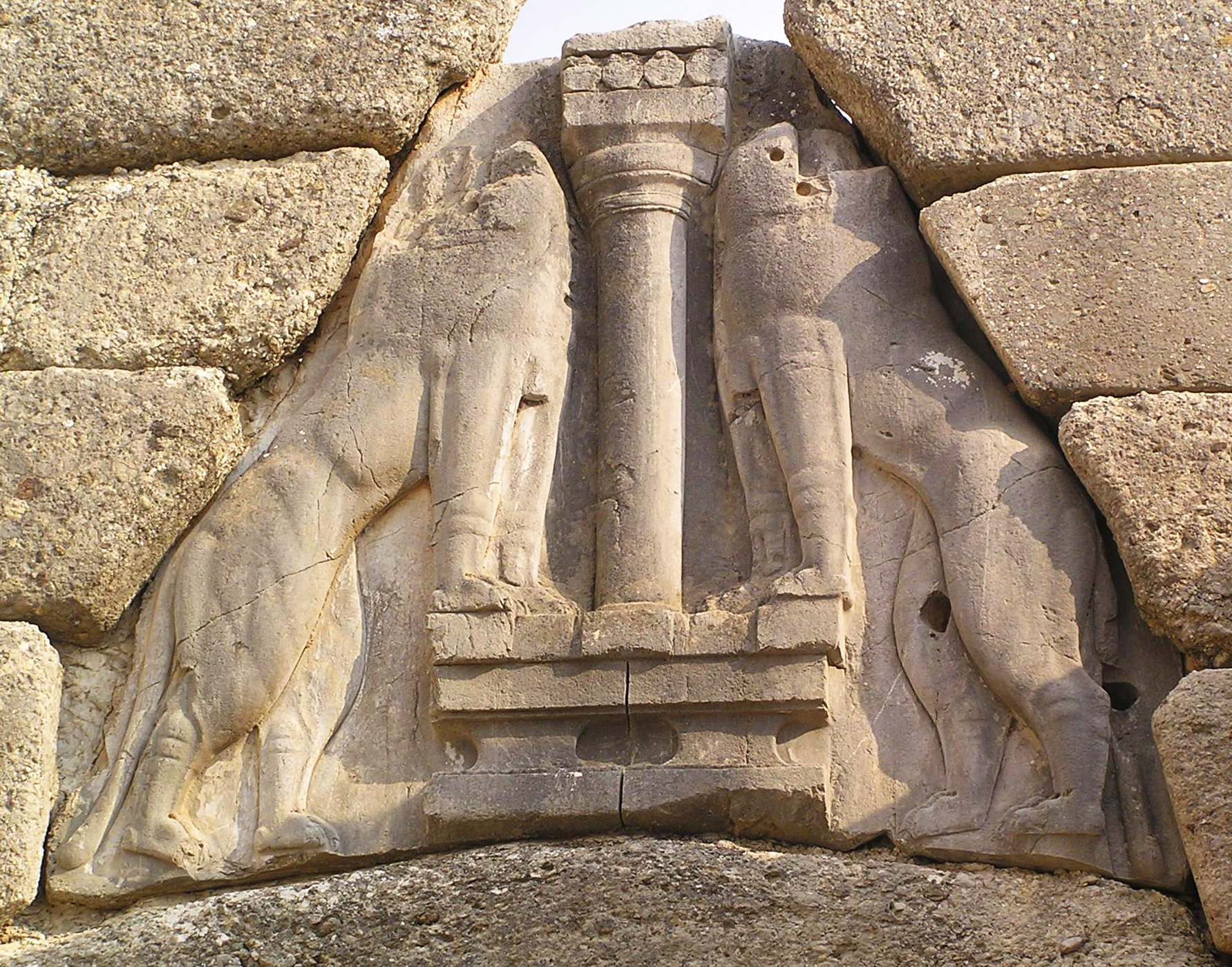
The Lion’s Gate in Mycenae is in almost perfect condition, with the exception of the lions, whose heads were completely destroyed. Archaeologists believe that this was due to the fact that the material from which the heads were cast was initially worse than that used for animal torsos. But according to an ancient legend, the heads of lions were cast in gold, and during the fall of Mycenaean culture were stolen. By the way, initially the lions were designed to protect the city from evil spirits, and since it was a very important place, ordinary people could not come here.
At the end of the XIX century, the famous German archaeologist Heinrich Schliemann conducted excavations and came to the conclusion that the gate was not at all the usual gate in our understanding, but a religious structure. This idea was suggested to him by the finds found near the gate: antique masks, weapons and precious stones.
Archaeological excavations
The first major excavations in Mycenae were conducted in the 19th century. At this time, a number of prominent archaeologists, and, first of all, the German Heinrich Schliemann, found unique artifacts that testify to the existence of the Mycenaean culture. By the way, it was after the excavations that the settlement was dubbed “zlatoobilny”, because many gold products were found here. The archaeological reserve consists of the following parts:
Funeral circle A
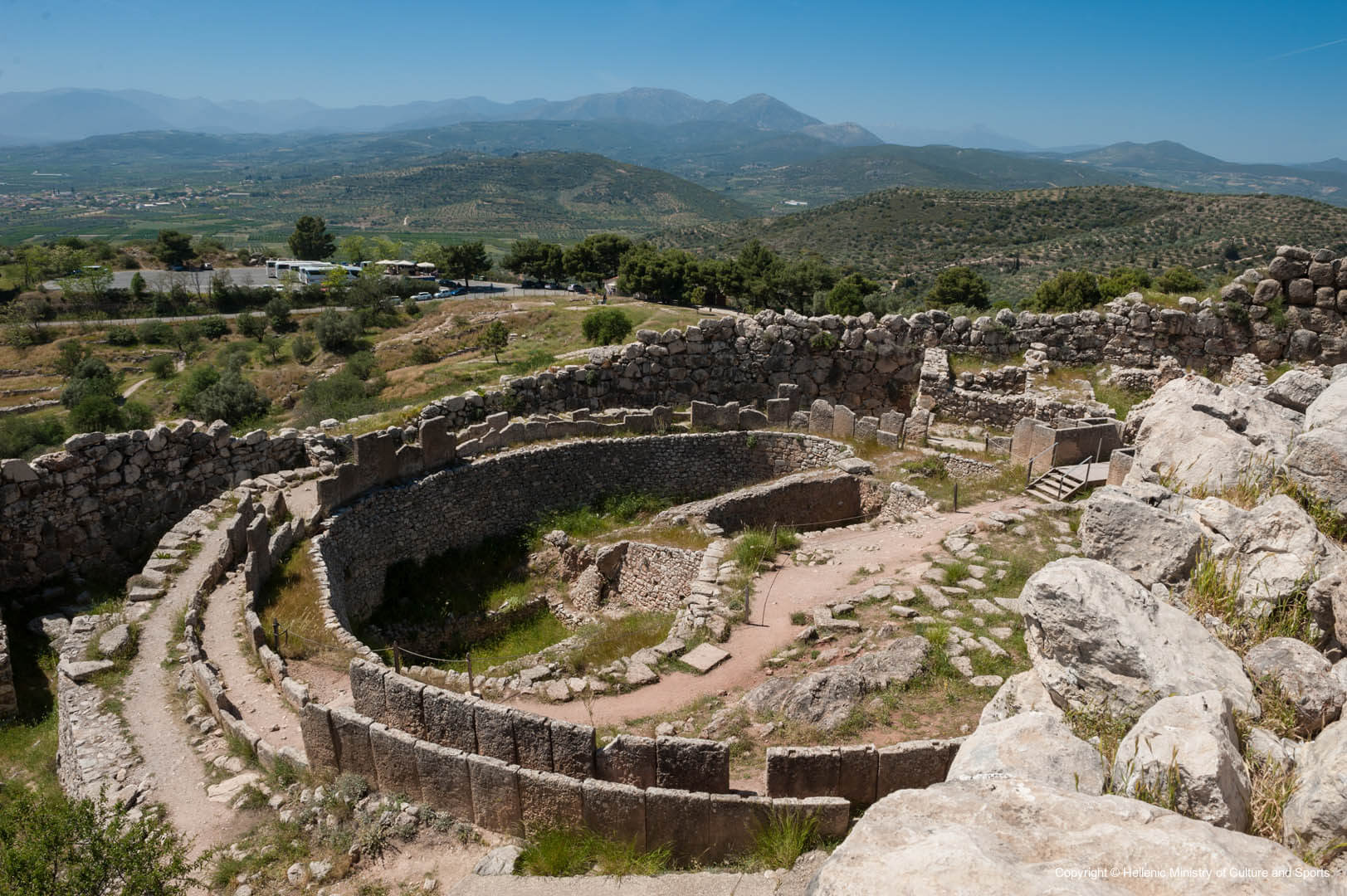
It was in a small area that archaeologists dubbed Burial circle A that the most interesting and important artifacts were found. For example, chess tombs and objects of the Trojan War. The attraction has a rather tricky structure, and somewhat resembles Stonehenge.
Tank car
The city of Mycenae was often besieged by enemies, and an effective defense required a large supply of water. In the XIV century BC, cisterns were built here for the first time on the territory of Europe, the scale of which is amazing: at a depth of 18 meters there were huge barrels 5 meters high.
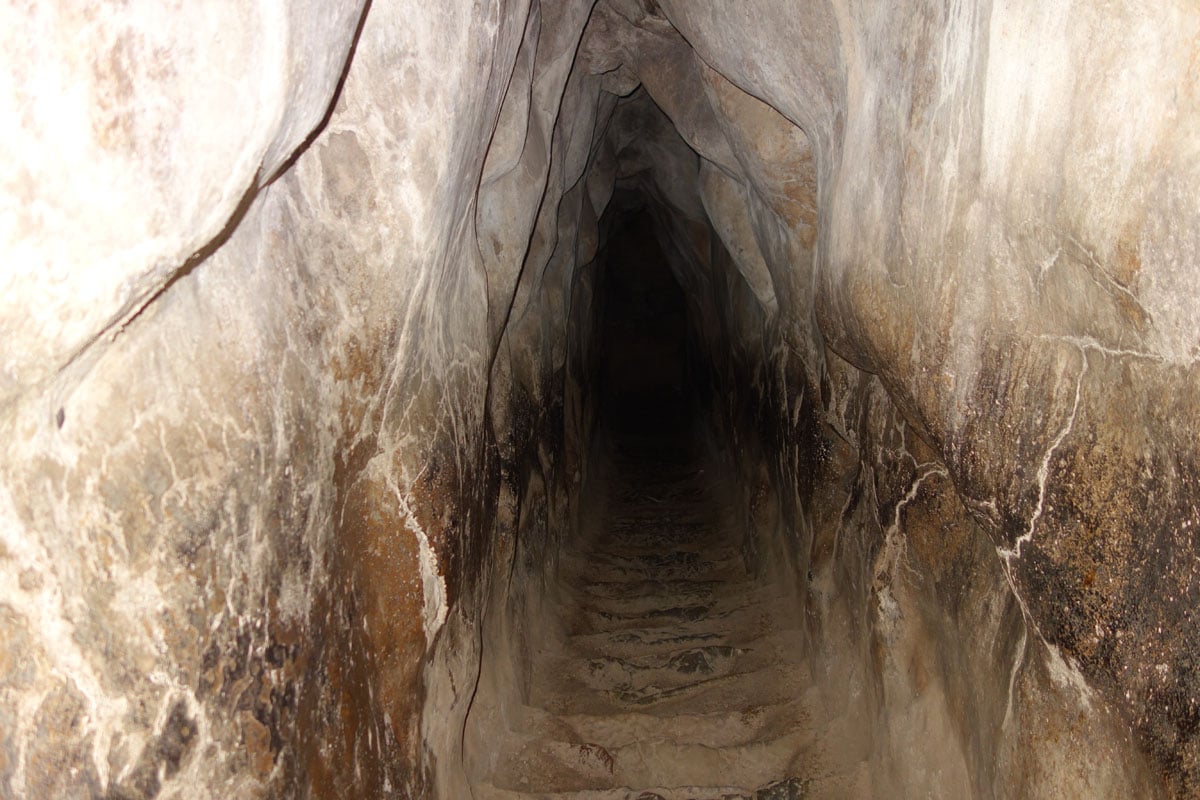
The Royal Palace
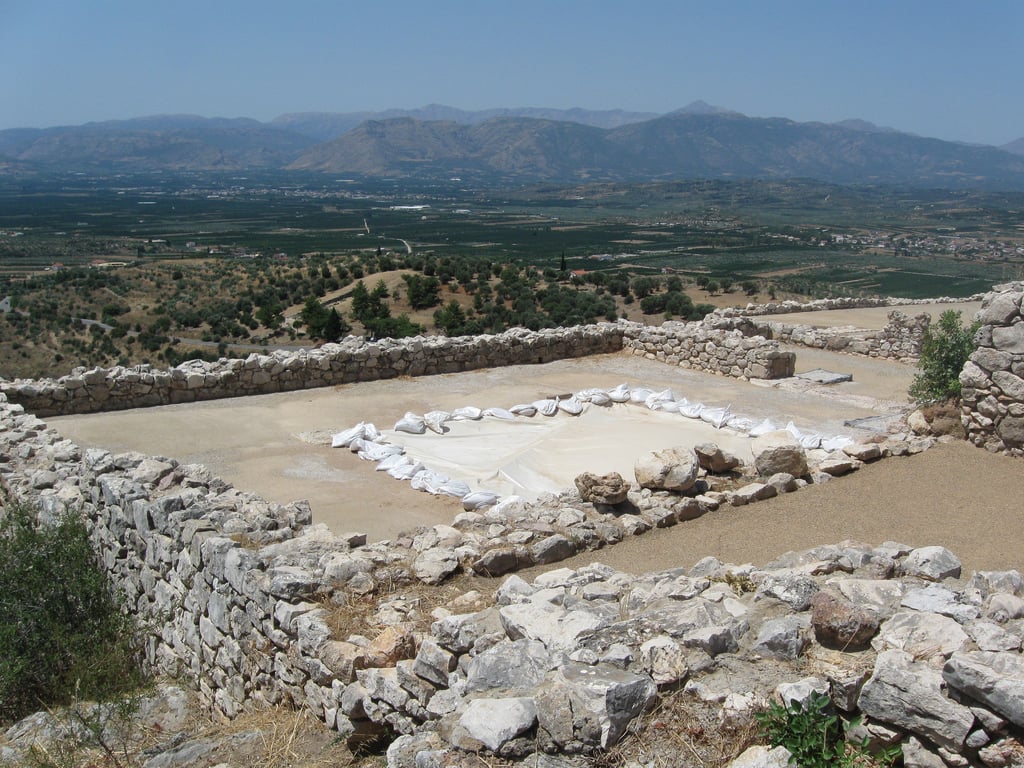
Excavations of the Royal Palace in Greece were carried out in the middle of the XIX century. Unfortunately, nothing remains of the former greatness of the attraction, and today tourists can only see the foundation. However, archaeologists were able to determine the location of the Megaron-the center of the palace, where the most important meetings and meetings took place.
- Admission fee: 12 euros for adults, 6 euros for seniors, children, teenagers, teachers. With this ticket, you can visit all the sights of Mycenae.
- Opening hours: Winter (8.30-15.30), April (8.30-19.00), May-August (8.30-20.00), September (8.00-19.00), October (08.00-18.00). The museum is closed on public holidays.
Archaeological Museum of Ancient Mycenae
The Archaeological Museum of Mycenae houses all the artifacts found during excavations on the territory of the ancient settlement. Almost all the museum items in the first hall were found in five ancient tombs, which Homer spoke about. The exhibition presents items made of ceramics (vases, pitchers, bowls), ivory (jewelry, small animal figures), stone (tools), gold (death masks, jewelry, cups). Some of the most interesting and unique exhibits are figures of Greek gods and edged weapons.
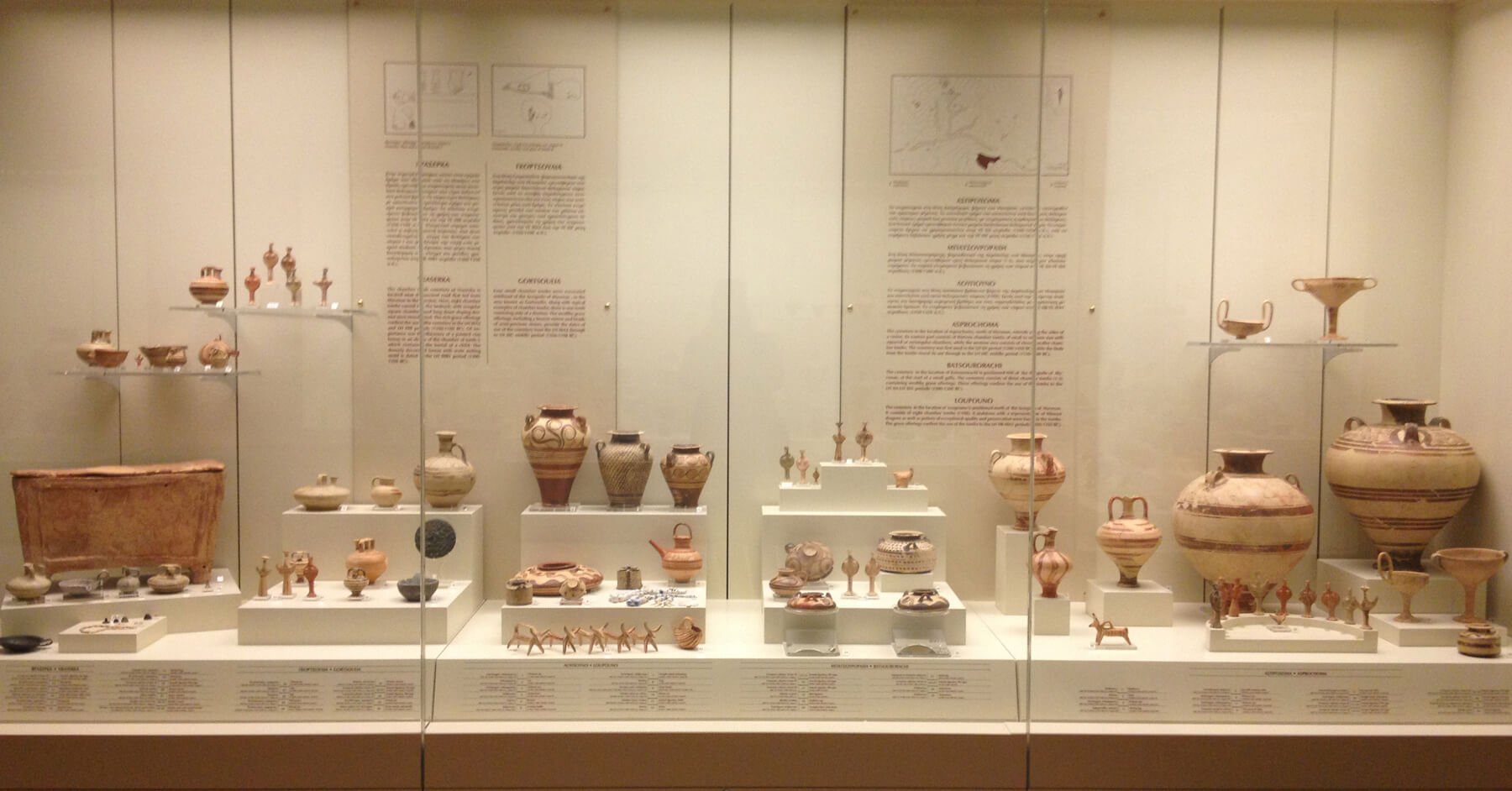
The second hall presents finds dating back to the Bronze Age. These are coins, women’s and men’s jewelry, funeral masks. The most famous is the “Mask of Agamemnon “(this is a copy, and the real one is in the National Archaeological Museum of Athens).
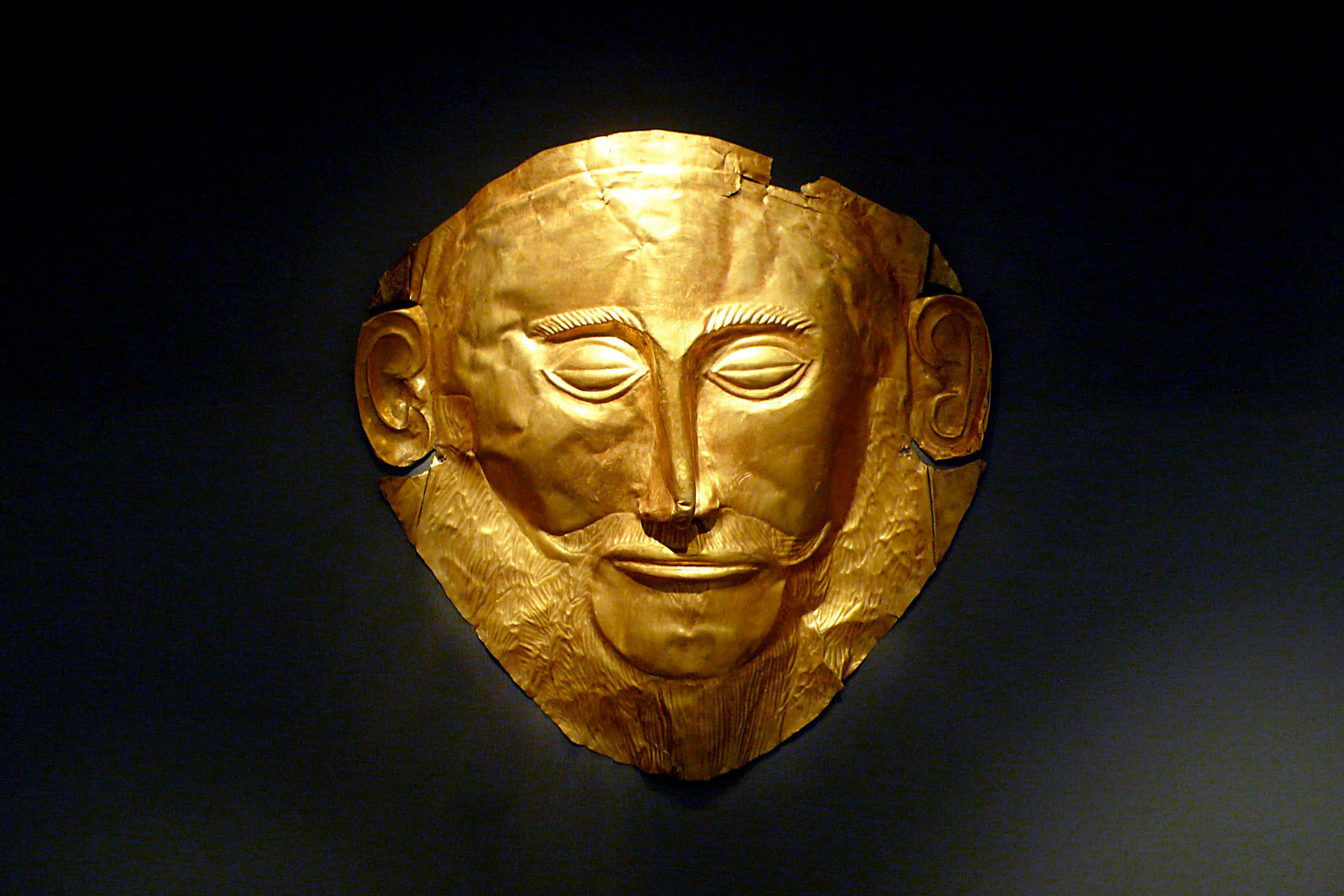
In the third hall there are models of the settlement created by scientists. Thanks to them, you can see Mycenae of ancient Greece and enjoy the beauty of facades, engravings and bas-reliefs that previously decorated the city. You can also see photos of Mycenae taken during excavations in the 19th and 20th centuries.
Citadel and Treasury of Atreus
Due to the fact that the stone walls surrounding the city have been preserved on all sides, the location of ancient Mycenae in Greece is well known, unlike, for example, the location of Troy. The height of the attraction varied from 6 to 9 meters, and the total length is 900 m. In some parts, openings were built into the walls where weapons and food were stored.
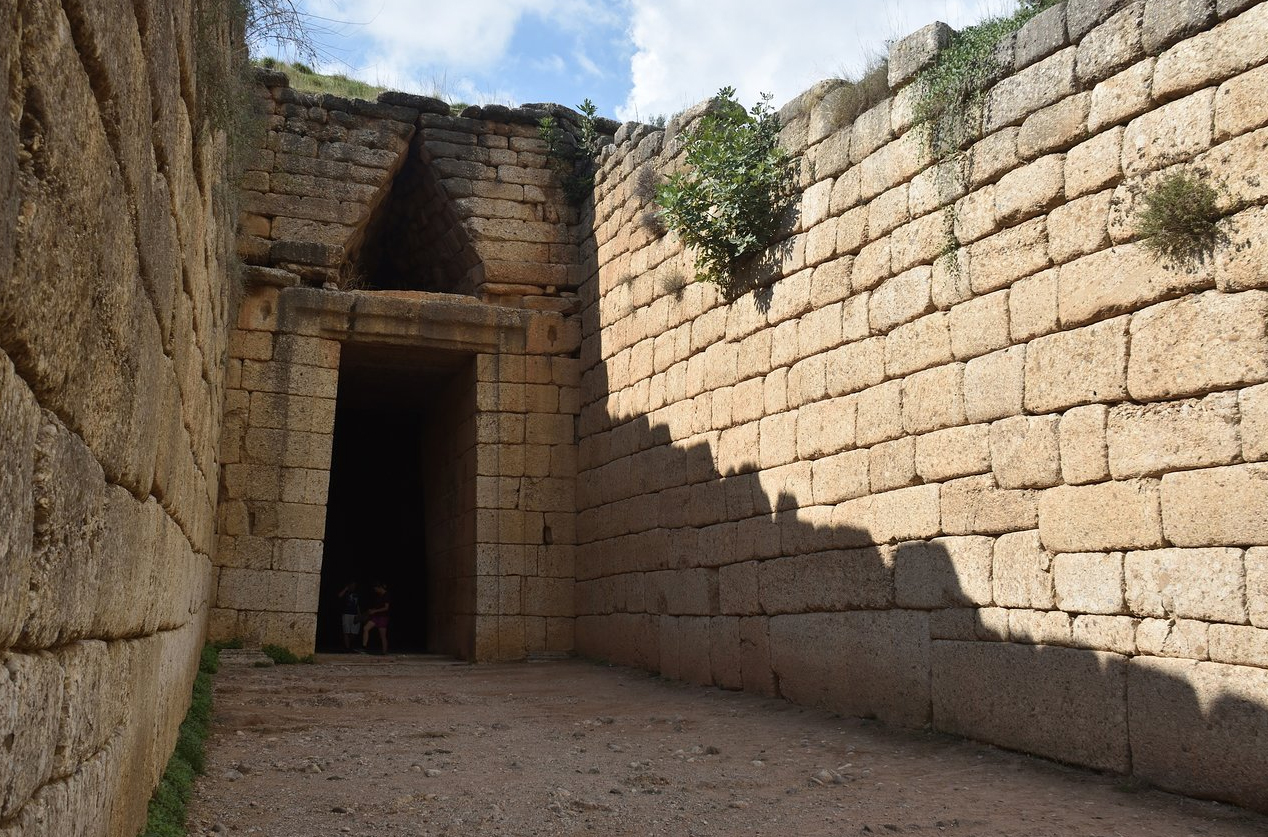
Mycenaean walls are often called Cyclopean, because the Greeks believed that only mythical creatures could move such heavy objects. The attraction is well preserved.
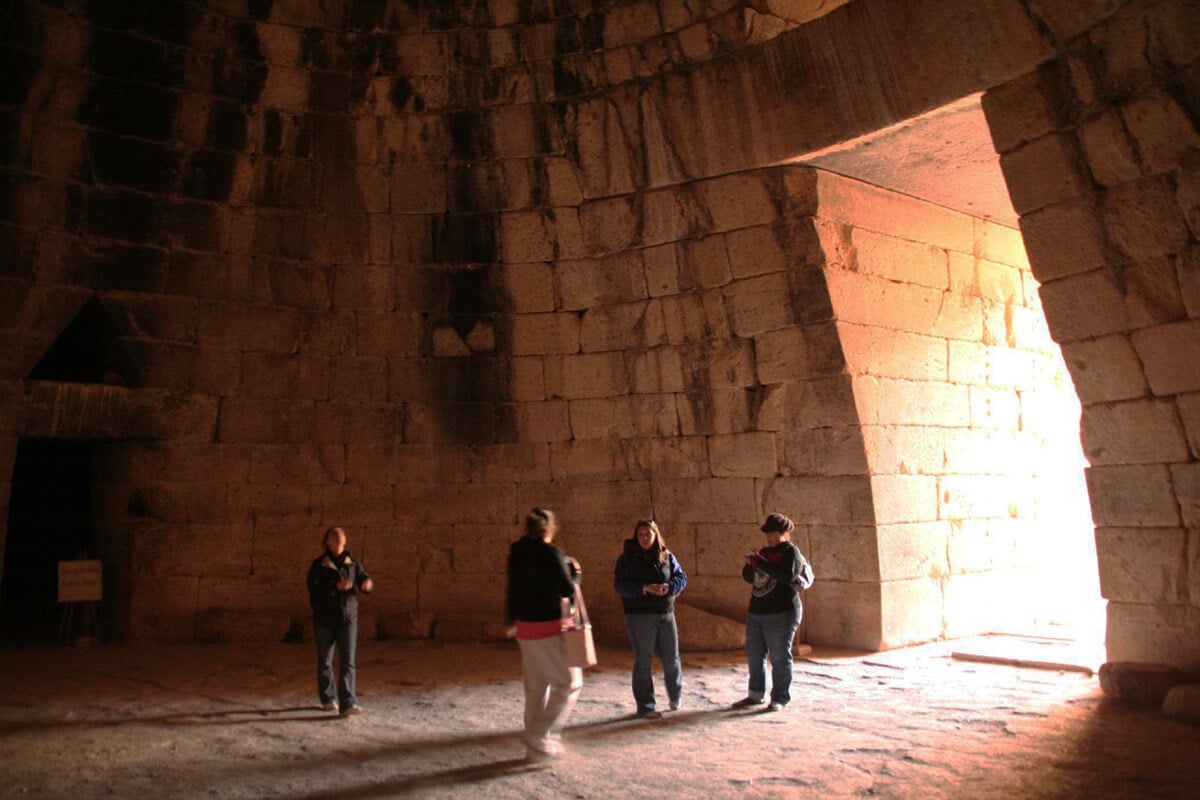
The Treasury of Atreus is the largest Mycenaean tomb, built in 1250 BC. e. The height of the inner room is 13.5 meters, and the total weight of the structure is 120 tons. Historians believe that earlier this landmark was decorated with gold, precious stones and bas-reliefs, some of which are now displayed in other museums in Greece. The treasures found in the coffins testify to the unprecedented (at that time) level of life and development of the city.
Ancient Nemea
As you know, on the territory of today’s Greece, many attractions have been preserved – the remains of ancient cities. One of them is ancient Nemea. This is a smaller-scale, but no less interesting settlement. The symbol of Nemea is the preserved stadium, where the best athletes of the city performed. There are also the ruins of several baths and the ruins of an ancient Christian basilica and private houses.
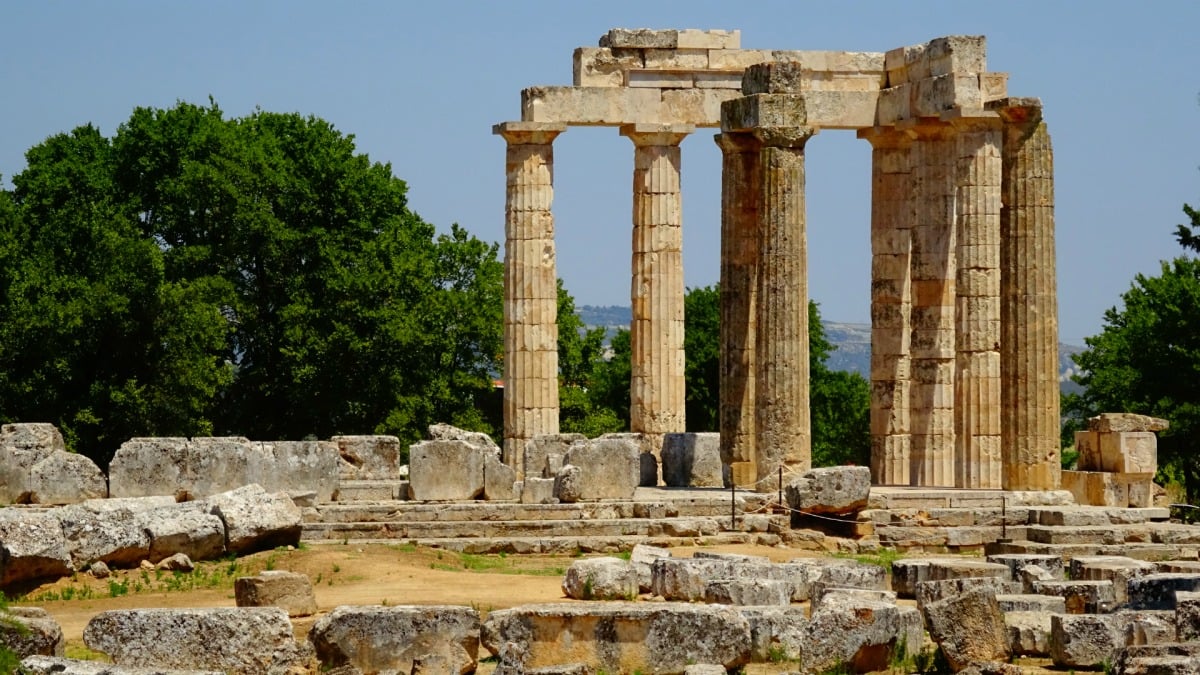
On the territory of ancient Nemea there is a modern museum, where you can see the results of the work of archaeologists: gold jewelry, fine ceramic products, ivory objects.
How to get to Mycenae from Athens
Athens and Mycenae are 90 km apart, and there are 2 ways to get from one city to the other.
By bus
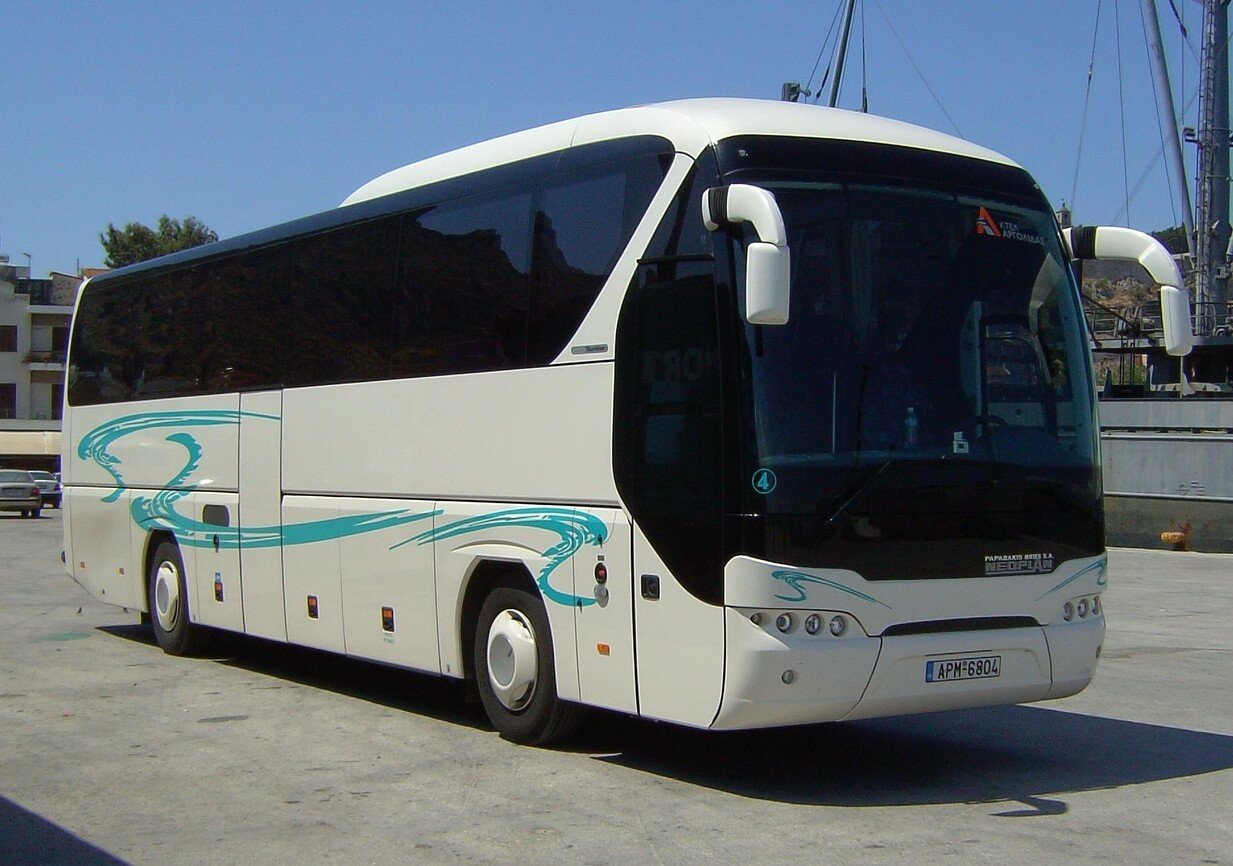
This is the most affordable and easiest option. Take the Athens bus stop to Fichti Station (Mycenae). Travel time is 1 hour and 30 minutes. The ticket price is 10-15 euros (depending on the travel time and bus class). They run every 2 hours from 8.00 to 20.00.
There are several bus companies in Greece. The most popular one is KTEL Argolidas, which is available in all major cities of the country. The ticket can be purchased in advance on the official website of the carrier: www.ktelargolida.gr or at the Athens Central Bus Station.
By train

Please take the train from Athens station on the route πειραιάς-Κιάτο (Piraeus – Kiato). At Zegolateio Korinthias station, get off and take a taxi.
Travel time by train is 1 hour and 10 minutes. By taxi – 30 minutes. The fare is 8 euros (train) + 35 euros (taxi). This type of trip is most advantageous for small groups.
The carrier is Greek Railways. You can book a ticket in advance on their official website: www.trainose.gr or purchase at the ticket office of Athens Central Train Station.
Useful tips

- Mycenae is far from shops and shopping centers, so take everything you need (first of all, water) with you.
- For a trip to ancient Mycenae, choose a low-heat day, because the attraction is located on a hilltop,and there is nowhere to hide from the scorching sun.
- It is better to visit Mycenae on a weekday, as there are a lot of tourists there on weekends.
- To avoid the crowds of tourists, get to Mycenae as early as possible. The majority of travelers arrive here at 11.00-12.00.
Mycenae (Greece) is one of the most important attractions of the Balkan country, which will appeal to lovers of history and archeology.
Vourvourou: Sithonia’s Scenic Resort for Nature Lovers and Beachgoers

